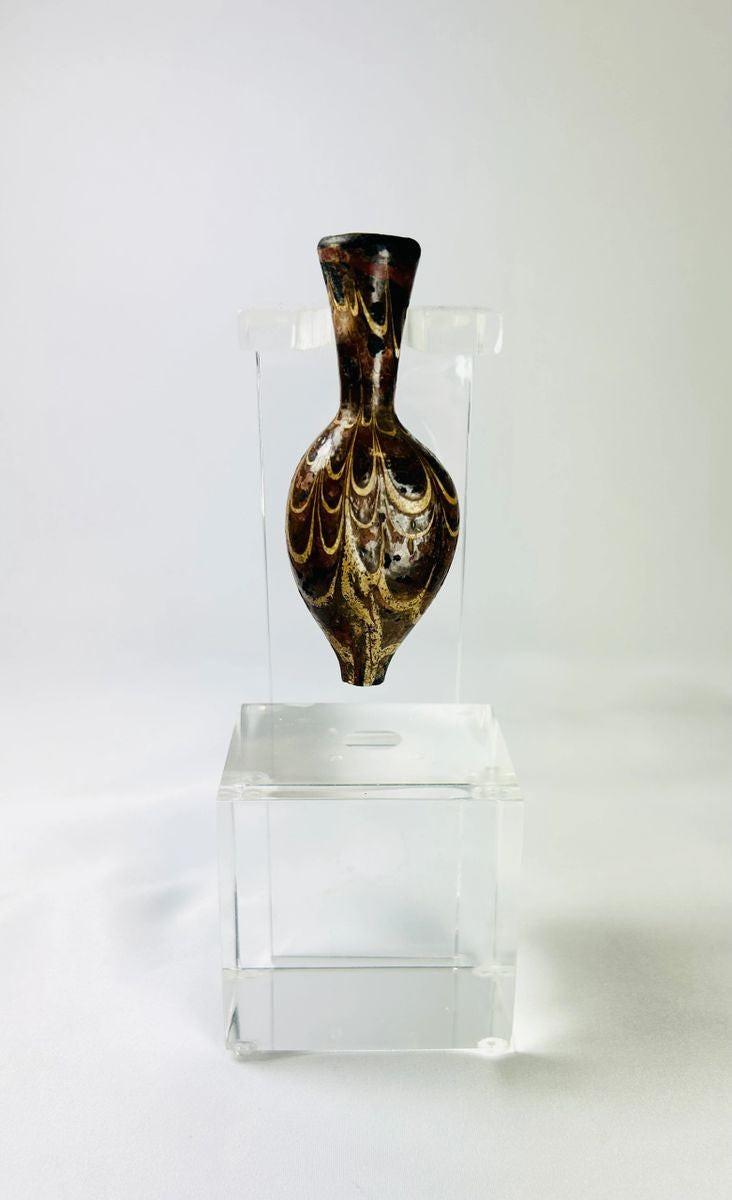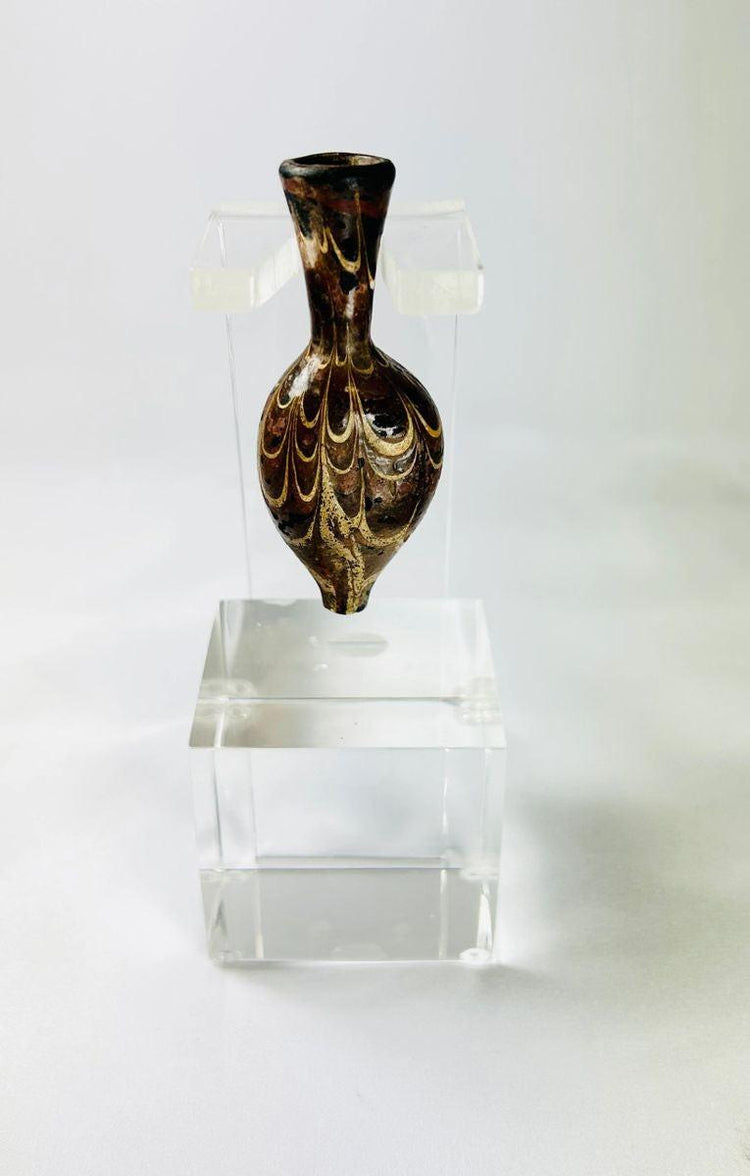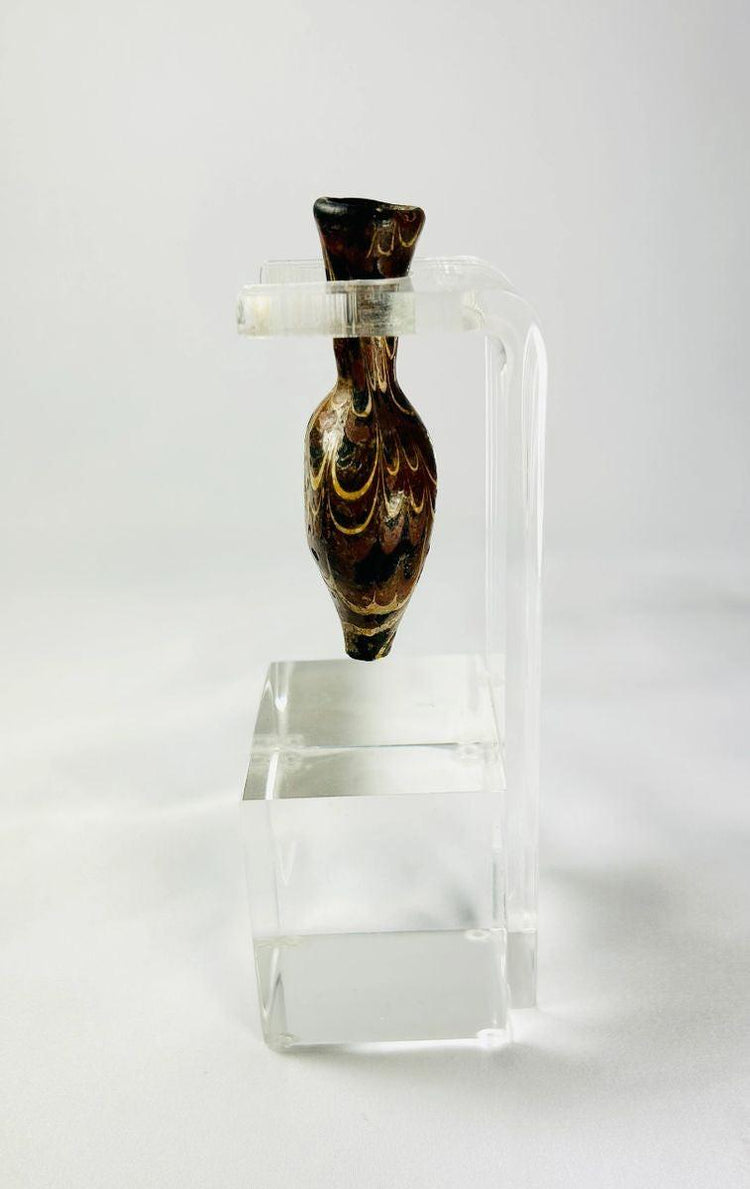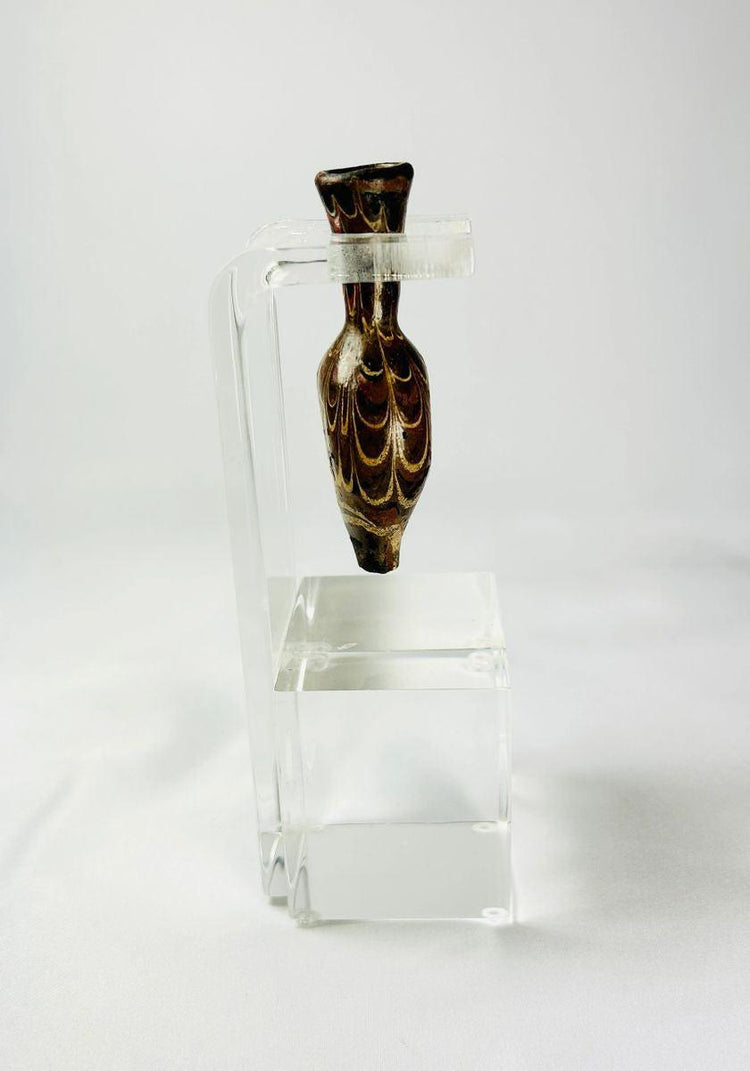Eastern Mediterranean Core Form Glass Alabastron | 5-6th Century AD
Description
More
Less
Historical Context & Origin
Region: Eastern Mediterranean
Material: Core-formed glass with marbled decoration
Period: Late Roman to Byzantine, 5th–6th Century AD
Description
This exquisite ancient alabastron exemplifies the luxury and artistry of Eastern Mediterranean glassmaking during the late Roman and Byzantine eras. Shaped in a graceful teardrop form with a slender neck and pointed base, it was designed to hold precious oils, perfumes, or ointments. The vessel is richly decorated with marbled patterns in earthy browns, yellows, and gold, enhanced with delicate yellow trailing and swirling designs that highlight the refined skill of ancient glass artisans.
Features
- Elegant teardrop body with slender neck and pointed base
- Intricate marbled patterning in browns, yellows, and gold
- Decorative yellow trailing and swirling designs
- Functional as a container for oils and perfumes, while also serving as a luxury object
Cultural Significance
Alabastra were highly prized in the Roman and Byzantine world, integral to both daily life and ritual practice. Used to store oils and fragrances, they reflect the importance of personal adornment and religious ceremony in ancient culture. Glass vessels of this type also symbolized wealth and status, embodying the sophisticated artistry of the Eastern Mediterranean, where core-forming and marbling techniques reached their peak. Such pieces highlight the region’s role as a center of cultural exchange and luxury production.
Condition
Remarkably well-preserved with only minor surface wear consistent with age. The vessel retains its elegant form, marbled decoration, and original sheen, with subtle patina enhancing its authenticity.
Dimensions
Height: 6 in
Width: 2 in
Depth: 2 in
Age
Circa 5th–6th Century AD
Description
Historical Context & Origin
Region: Eastern Mediterranean
Material: Core-formed glass with marbled decoration
Period: Late Roman to Byzantine, 5th–6th Century AD
Description
This exquisite ancient alabastron exemplifies the luxury and artistry of Eastern Mediterranean glassmaking during the late Roman and Byzantine eras. Shaped in a graceful teardrop form with a slender neck and pointed base, it was designed to hold precious oils, perfumes, or ointments. The vessel is richly decorated with marbled patterns in earthy browns, yellows, and gold, enhanced with delicate yellow trailing and swirling designs that highlight the refined skill of ancient glass artisans.
Features
- Elegant teardrop body with slender neck and pointed base
- Intricate marbled patterning in browns, yellows, and gold
- Decorative yellow trailing and swirling designs
- Functional as a container for oils and perfumes, while also serving as a luxury object
Cultural Significance
Alabastra were highly prized in the Roman and Byzantine world, integral to both daily life and ritual practice. Used to store oils and fragrances, they reflect the importance of personal adornment and religious ceremony in ancient culture. Glass vessels of this type also symbolized wealth and status, embodying the sophisticated artistry of the Eastern Mediterranean, where core-forming and marbling techniques reached their peak. Such pieces highlight the region’s role as a center of cultural exchange and luxury production.
Condition
Remarkably well-preserved with only minor surface wear consistent with age. The vessel retains its elegant form, marbled decoration, and original sheen, with subtle patina enhancing its authenticity.
Dimensions
Height: 6 in
Width: 2 in
Depth: 2 in
Age
Circa 5th–6th Century AD
You May Also Like




















